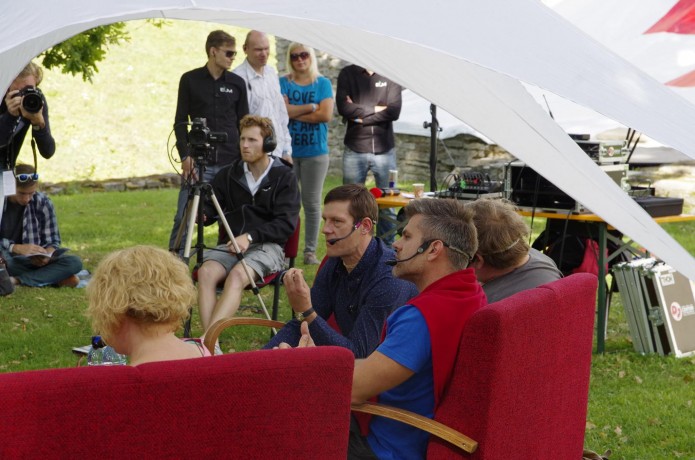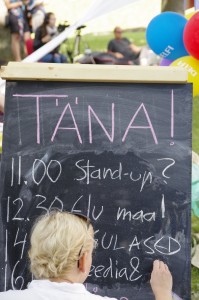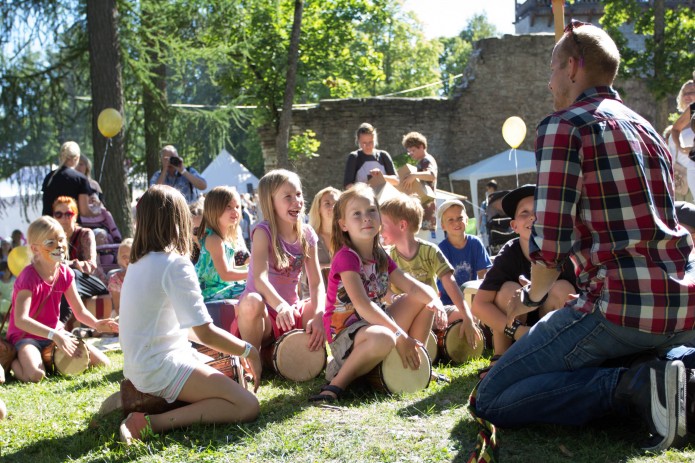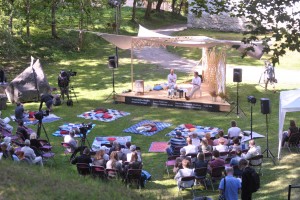1. Diversity of Debate
With a speaking area for every taste, the Arvamus Festival has thrown up some interesting debates, on every part of Estonian public (and private) life. The discussion on the need for a Russian-language TV channel in Estonia continues to be heard, and I attended the debate run by Keskerakond (the Centre Party), which held a discussion of its representatives’ views on the matter.
With questions often heated, as they regularly are when it comes to Estonian politics, it was interesting to see the public being given an open forum on which to question elected politicians, and even more interesting to see how they responded. Other political parties have been holding parallel debates, including the Reform Party, the IRL and the Social Democrats, making this a fully-rounded political debate.
2. A Chance for a Charm Offensive
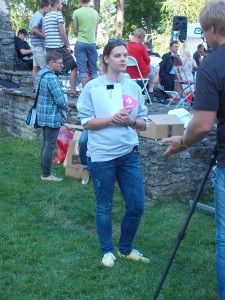
Estonia’s first dedicated public Russian-language television channel, begins full service in September with 20 hours a week of factual and entertainment programming. Its representatives, such as channel head Darja Saar, were answering questions from all-comers about what it meant for Estonia, and why the station had been set up.
The positive PR campaign for the service, which will produce original programming in Estonia bringing news content, along with items such as a drama series, was led by Saar and Communications Manager Anastasia Dratsova. As the Arvamus Festival is a meeting-point for all those who like to consider issues, regardless of their background or interest, it makes it the perfect place for such a charm offensive.
3. Connecting with the Heart
“It’s the heart of Estonia.” I was told this about ten times by people I questioned about what was so special about Paide. The town, which hosts the Arvamus Festival up on Vallimägi, is loved by all visitors, especially on a blazing-hot summer’s day. There seems to be a special atmosphere of togetherness hereDSCF1669, which makes it so much easier to relax, unwind and enjoy calm deliberation of the issues not just of the mind, but also of the heart.
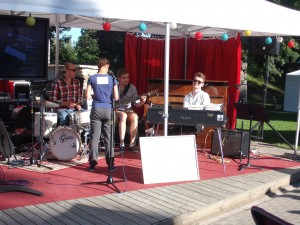
It’s also a place where the best of Estonian culture comes to play. Tallinn’s best jazz club, Philly Joe’s, which often hosts artists of the calibre of Liisi Koikson, Holger Marjamaa and Laura and Joel Remmel, has brought a selection of great musicians to the festival. They lit up lunchtime with their smooth brand of virtuoso playing.
4. Connecting with the Stomach
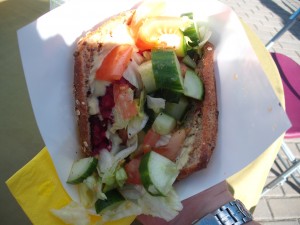
While listening to the music from Philly Joe’s, I sampled some of the excellent food on offer around the central courtyard of the Arvamus Festival grounds. Tallinn’s Kohvik Inspiratsioon, a vegetarian cafe of some repute, brought its cooks and service staff to Arvamus, and I ordered the veggie burger, purely for reasons of taste-testing, you understand.
The wholemeal bread used to wrap the burger was crusty and sturdy, even with a sizeable cut of cucumber and tomato inside. The burger was of course healthy, especially as it did not contain any dressing – the burger being made from a very tangy beetroot mix that more than provided enough flavour.
Inspiratsioon did indeed provide inspiration to continue my hunting of great events, though it still left an old-fashioned carnivore like me craving a juicy hamburger. It must be said, though, that the veggie burger, made with love, represents great value at €4.
5. Much More than Just Politics
Someone said before the festival, explaining why he would not be attending, “it’s just politics, though, isn’t it?” Er, no. The hundreds of events and talks cover everything from Estonian food, to why Estonia does not yet have an internationally-recognised crime novelist.
The search for the Estonian export star who could be a new Steig Larsson continues, but at the stage sponsored by Rahva Raamat, keen readers were given the chance to recline in the most comfortable bean-bags you can imagine, and listen to talented authors such as Indrek Hargla discuss their work, and the future of Estonian literature.
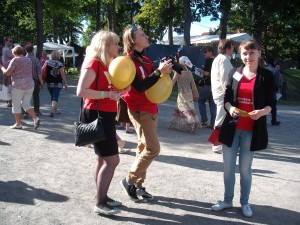
Meanwhile, students from Estonian high schools all over the country taking part in the Our New Media Generation project in association with the Ministry of Education and the website etnoweb.ee were given the chance to go out, gain some experience and confidence, and do some reporting from the festival.
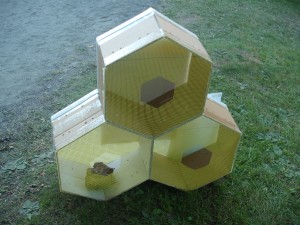 Some of the stands at the Arvamus festival weren’t just about the speakers taking part in the debate, but were also about great design creating a more effective space in which to have discussions. The best design of any stand at the festival, a space that treated acoustics and sight-lines as far more than afterthoughts, was created by Architecture and Urban Planning students of Eesti Kunstiakadeemia (the Estonian Academy of Arts).
Some of the stands at the Arvamus festival weren’t just about the speakers taking part in the debate, but were also about great design creating a more effective space in which to have discussions. The best design of any stand at the festival, a space that treated acoustics and sight-lines as far more than afterthoughts, was created by Architecture and Urban Planning students of Eesti Kunstiakadeemia (the Estonian Academy of Arts).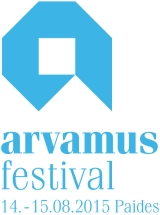
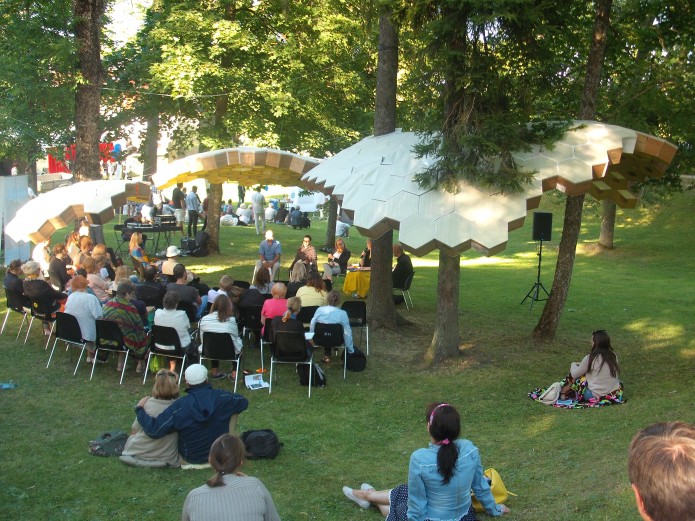
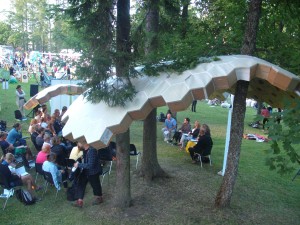

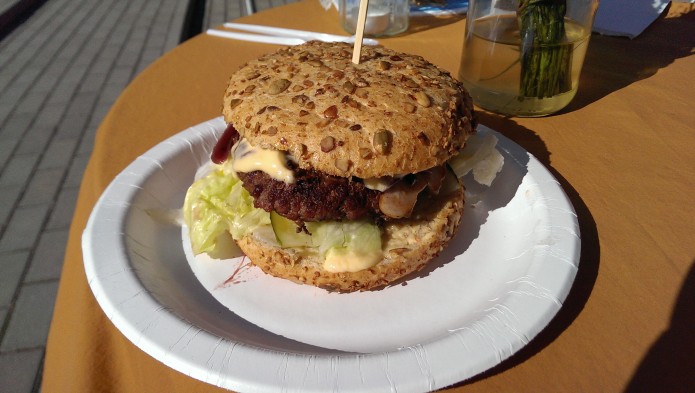
![IMAG6430[1]](../../wp-content/uploads/2015/08/IMAG64301-300x170.jpg)
